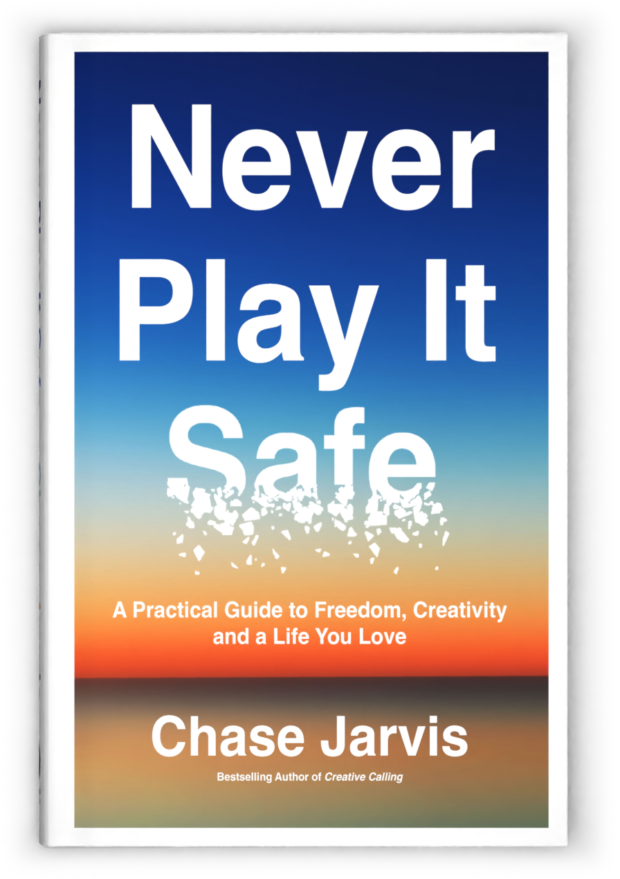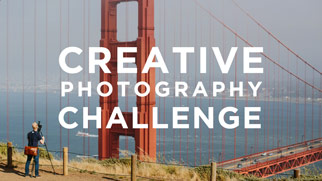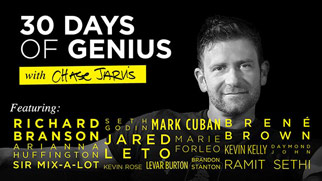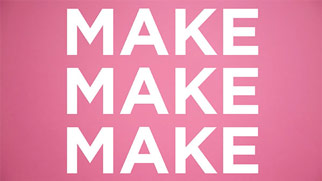 Portrait Not as View of the Soul, But as Personal Advertising?
Portrait Not as View of the Soul, But as Personal Advertising?
What is the relationship between portrait as collaboration and portrait as unbiased recording? If the eyes are windows to the soul, and if in advance of a portrait sitting you’ve basically had the windows washed and lined up all the furniture inside and put on your favorite clothes for an open house, are the photos that result from that sitting any less “real” than a haphazard photojournalistic snapshot someone grabs of a subject at 10PM on a Tuesday night? Are the results from one portrait style more authentic or merit-worthy than another? I recently wrestled with these questions when I got my hands on an advance copy of the March/April 2007 American Photo “Portrait Issue.” Editor, David Schonauer’s piece got my mind really moving–it’s definitely worth a read.
I’ve long had huge respect for great portraits and pure portrait photographers. Shooting great portraits can be intense–wonderfully exploratory sometimes, but almost always intense. Especially if you set out (as many photographers claim) to capture an image that authentically and reasonably addresses the sitter, and the photographer’s vision of that sitter.
In reading comments from numerous uber-talented colleagues featured in Schonauer’s piece, like Leibovitz, Watson, Rolston and others, one thing that was inferred by many, but not directly addressed to my satisfaction by any, was the idea NOT of portrait as hollowed ground or sacred view into the soul of the sitter (there was some of that), but rather that nearly all portraits–from your high school yearbook shot, to family shots by Yen Lui, from glamour shots by Deb, to Oprah Winfrey shot by Leibovitz–they’re all fundamentally ‘portrait as PR or personal advertising.’
With the exception perhaps of candid street shots or environmental portraiture, surprises, and the occasional lucky grabbed shots, isn’t it legit to consider that all portraits (anybody who pauses, “sits”, for any photographer), where there’s an active collaboration between photographer and sitter, are NOT aimed to produce a balanced and sacred view into whom the subject really IS, but rather aimed at creating a manipulated view of the subject and how his or her photographer wants the subject to be? (a la the perfect little Beaver Clever family, your “good side” for the junior high dance photo, or in the case of Mark Laita’s interesting picture on page 63, always surrounded by prostitutes–and definitely dressed up for the shot, etc, insert your ideal vision here…)
Only one brave shooter in the article, Laita (who does beautiful work btw), claimed outright that he represents people as they really are: “I’m just showing them [his subjects] the way they are.” Whereas another shooter, Hendrik Kerstens (equally talented), almost made as bold a claim in saying he believes he accurately captures everyday life–even during a more formal portrait sitting–when he likens his portraits of his daughter to the portraits of Dutch master painters, “seen as a surface which can be read as everyday life.”
Personally, while I’m always impressed by the work of these shooters, I’m surprised that Laita thinks he–or really anyone–can reach into the honest depths of their sitter, and somehow get at fundamental reality. I fully acknowledge you can get closer through relaxing your subjects, knowing things about them, yada, yada, but I’m of the opinion that a large portion of portraiture is more like façade-laden (another quote from Kerstens) “paintings of the Italian Renaissance where a story is told,” than it is an accurate, honest tell-all of the subject. I’d go even further and suggest that not only is a story told by photographer and a collaborative sitter, but, like all good art, that story is intentional, planned, executed, even scripted–less rooted in honesty and more in, perhaps, fantasy.
If you’re having trouble swallowing this idea, I understand. Heck, I’m not sold. But consider for a moment how you feel when someone points a camera at you, not even for a formal portrait, but even just at a birthday party. As an ad hoc sitter, don’t you now internalize this act? Even if it’s incredibly subtle, you are coerced into something when that camera’s pointed at you; it could be a smile or even attempting NOT to act (smile, turn away, etc.) required some coercion from the camera, right?
I’m inclined to think that photographic portraits are extremely difficult to make in a purely authentic manner. (This begs the question ‘what is authentic?’ of course…but save that for later…) Just like the Heisenberg Uncertainty Principle which says roughly that you can’t actually measure the location of electrons in sub atomic physics because by attempting to measure them, you’re inherently interfering with how they behave, so you can’t possibly get an accurate measurement–it’s equally questionable whether or not you can really get to a person’s unadulterated essence by pointing a camera at them if they’re conscious of it. That act alone interferes.
It’s important to call out that, while I may be stating the obvious to some, I’m not attempting to undermine the incredible history of this recently refreshed art of portraiture, or the sacred relationship between photographer and sitter–I’m merely likening the process of shooting/sitting for a portrait as a proactive relationship attempting to create a controlled message. Isn’t this something worthy of mention? While I’m indebted to, and often highly inspired by, images that result from great portrait sittings, I feel somewhat compelled to note that these themes of a controlled message closely relate to something that pervades our culture: advertising. From Wikipedia, “Advertising is paid communication through a non-personal medium [print or file] in which the sponsor [sitter agrees] is identified and the message [resulting photo] is controlled [by the sitter and the shooter].” The […] marks are mine. One could argue that the definition of ‘advertising’ seems scarily close to what we talk about when we discuss the collaborative efforts of sitter, shooter, and viewer in photographic portraiture.
Thus, having earlier tossed aside candid street/environmental portraiture and the like as exceptions to this train of thought, and focused here more on all other portraiture, shouldn’t we agree, as most all shooters interviewed for the article claim, that there is collaboration, and this collaboration has an end goal not of capturing the soul, but of creating a measured, “advertising” picture of the sitter? Nigel Parry gets his subjects to “cooperate”, and Matthew Rolston seeks a “private performance.” Only Leibovitz (which surprised me) says she feels “cheap” when she “tries to make something happen”.
So what am I getting at: Are
all non-candid portraits lies? Certainly not. But is there an interesting dance–with image, authenticity, or lack thereof–that shooter and sitter, engage in when portraits are made? Absolutely. The sitter most often chooses her clothes (or his fake blood, note Nicholson when you read the article); the shooter chooses her camera and lighting, etc. It’s an elaborate, sometimes incredibly subtle, plan that often closely resembles some never discussed personal PR or advertising. Kerstens comes clean in a sense when he reminds us that he has to make good images of his daughter because “It’s a responsibility we take very seriously … these pictures will be around for 50 years.”
Sounds vaguely like ‘long-term branding’ to me.
We all seem ready to call the portrait a “collaboration” artists and subject’s alike, but isn’t my point here just really taking this one step further and recognizing that people are motivated to put forward a message? Sometimes happy, other times sad, sometimes powerful, other times subtle, and sometimes the message of a non-message. And isn’t this a lot like advertising?
(FYI, this is cross-posted at American Photo’s great blog, State of the Art – check it out.)
























Good day, i believe that we recognized a person stopped at my blog site therefore i stumbled on rewind the will? . I’m looking to to locate what to enhance my personal web site! I reckon that the ok to start using a handful of your thinking!
Woah the following weblog is a plus i enjoy reading your posts. Sustain the great do the job! You already know, many people are hunting round due to this details, you are able to help them significantly.
Soon after examine just several with the blog posts in your web page now, and I basically like your strategy of blogging. I bookmarked it to my bookmark internet internet site record and can most likely be checking back soon. Pls attempt my web site as properly and let me know what you assume.
It is perfect time to create a couple of plans for the future and it is time to become delighted. I have study this place up and if I may well I wish to suggest you couple of attention-grabbing troubles or advice. Maybe you could compose next articles referring to this short article. I wish to read additional troubles about it!
Only wanna input on few general things, The website design is perfect, the content material is rattling fantastic. “Earn but don’t burn.” by B. J. Gupta.